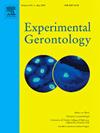Effects of WB-EMS and protein supplementation on body composition, physical function, metabolism and inflammatory biomarkers in middle-aged and elderly patients with sarcopenic obesity: A meta-analysis of randomized controlled trials
IF 4.3
3区 医学
Q2 GERIATRICS & GERONTOLOGY
引用次数: 2
Abstract
BACKGROUND The patients with sarcopenic obesity (SO) have the characteristics of both sarcopenia and obesity, that is, less muscle mass and increased fat mass, and their morbidity, disability and mortality are higher than patients with sarcopenia or obesity alone. OBJECTIVES To investigate the effects of whole-body electromyostimulation (WB-EMS) training and protein supplementation intervention on body composition, physical function, metabolism and inflammatory biomarkers in middle-aged and elderly patients with SO. METHODS We searched for randomized controlled trials in seven databases, including PubMed, Web of Science, Embase, Cochrane Library, Scopus, SinoMed, and CNKI as of July 3, 2021. The methodological quality of each included study was assessed using the Physiotherapy Evidence Database (PEDro) scale. The Cochrane Risk of Bias Tool was used to assess the risk of bias. Statistical analysis was performed using Review Manager 5.3. RESULTS Eleven randomized controlled studies with a total of 779 participants were included in this meta-analysis. WB-EMS training improved sarcopenia Z-score (MD = -1.52, 95 % CI: -2.27, -0.77, P < 0.0001) and waist circumference (WC) (MD = -1.41, 95 % CI: -2.62, -0.20, P = 0.02), and increased skeletal muscle mass index (SMI) (MD = 1.27, 95 % CI: 0.66,1.88, P < 0.0001) and appendicular skeletal muscle mass (ASMM) (MD = 0.68, 95 % CI: 0.08, 1.27, P = 0.03). Protein supplementation intervention reduced body fat rate (BF%) (MD = -1.28, 95 % CI: -1.88, -0.68, P < 0.0001, I2 = 0 %), total body fat (TBF) (MD = -0.98, 95 % CI: -1.65, -0.31, P = 0.004, I2 = 0 %) and trunk body fat mass (TBFM) (MD = -0.50, 95 % CI: -0.94, -0.06, P = 0.03, I2 = 0 %), and increased grip strength (GS) (MD = 1.13, 95 % CI: 0.06, 2.21, P = 0.04, I2 = 0 %). The combination of WB-EMS and protein supplements is beneficial to most body components and physical functions, such as SMI (MD = 1.21, 95 % CI: 0.73, 1.51, P < 0.00001, I2 = 0 %), GS (MD = 1.60, 95 % CI: 0.80, 2.40, P < 0.0001, I2 = 45 %) and walking speed (WS) (MD = 0.04, 95 % CI: 0.02, 0.06, P < 0.0001, I2 = 49 %). Compared with protein supplementation alone, WB-EMS could have an additional beneficial effect on BF% (MD = -0.92, 95 % CI: -1.80, -0.04, P = 0.04) and WC (MD = -1.03, 95 % CI: -1.70, -0.36, P = 0.003). Nevertheless, the addition of protein supplements did not provide any additional benefit compared with WB-EMS alone. In addition, there was almost no positive effect of WB-EMS and protein supplements on metabolic and inflammatory biomarkers. CONCLUSIONS As things stand, protein supplementation intervention can effectively reduce body fat percentage, fat mass, and increase grip strength in SO patients. Both WB-EMS and protein supplementation intervention had no significant effects on metabolic and inflammatory biomarkers. WB-EMS combined with protein supplementation intervention was beneficial for SO patients in many ways. Due to the small number of studies, further studies are needed to confirm the efficacy of WB-EMS alone or in combination with protein supplementation intervention in SO patients. REGISTRATION NUMBER INPLASY202190096 DOI:10.37766/inplasy2021.9.0096.WB-EMS和蛋白质补充对中老年缩肌型肥胖患者身体成分、身体功能、代谢和炎症生物标志物的影响:随机对照试验的荟萃分析
背景少肌型肥胖(SO)患者同时具有少肌症和肥胖的特点,即肌肉量减少和脂肪量增加,其发病率、致残率和死亡率均高于单纯少肌症或肥胖患者。目的研究全身电刺激(WB-EMS)训练和蛋白质补充干预对中老年SO.患者身体成分、身体功能、代谢和炎症生物标志物的影响。方法检索PubMed、Web of Science、Embase、Cochrane Library、Scopus、,截至2021年7月3日。使用物理治疗证据数据库(PEDro)量表评估每项纳入研究的方法学质量。使用Cochrane偏倚风险工具评估偏倚风险。使用Review Manager 5.3进行统计分析。结果本荟萃分析包括779名参与者的随机对照研究。WB-EMS训练改善少肌症Z评分(MD = -1.52,95 % CI:-2.27,-0.77,P < 0.0001)和腰围(WC)(MD = -1.41195 % CI:-2.62,-0.20,P = 0.02)和增加的骨骼肌质量指数(SMI)(MD = 1.27,95 % CI:0.66,1.88,P < 0.0001)和阑尾骨骼肌质量(ASMM)(MD = 0.68,95 % CI:0.081.27,P = 0.03)。蛋白质补充干预降低了体脂率(BF%)(MD = -1.28,95 % CI:1.88,-0.68,P < 0.0001,I2 = 0 %), 全身脂肪 = -0.98,95 % CI:1.65,-0.31,P = 0.004,I2 = 0 %) 和躯干脂肪量(TBFM)(MD = -0.50,95 % CI:-0.94,-0.06,P = 0.03,I2 = 0 %), 和增加的握力(GS)(MD = 1.13,95 % CI:0.062.21,P = 0.04,I2 = 0 %). WB-EMS和蛋白质补充剂的组合对大多数身体成分和身体功能有益,如SMI(MD = 1.21,95 % CI:0.73,1.51,P < 0.00001,I2 = 0 %), GS(MD = 1.60,95 % CI:0.80,2.40,P < 0.0001,I2 = 45 %) 和步行速度(WS)(MD = 0.04,95 % CI:0.020.06,P < 0.0001,I2 = 49 %). 与单独补充蛋白质相比,WB-EMS可能对BF%有额外的有益作用(MD = -0.92.95 % CI:1.80,-0.04,P = 0.04)和WC(MD = -1.03,95 % CI:1.70,-0.36,P = 0.003)。然而,与单独的WB-EMS相比,添加蛋白质补充剂没有提供任何额外的益处。此外,WB-EMS和蛋白质补充剂对代谢和炎症生物标志物几乎没有积极影响。结论就目前情况来看,补充蛋白质干预可以有效降低SO患者的体脂率、脂肪量,提高握力。WB-EMS和蛋白质补充干预对代谢和炎症生物标志物没有显著影响。WB-EMS联合蛋白质补充干预对SO患者有多种益处。由于研究数量较少,需要进一步的研究来证实WB-EMS单独或与蛋白质补充干预相结合对SO患者的疗效。注册号:INPLASY202190096 DOI:10.37766/inplas2021.9.0096。
本文章由计算机程序翻译,如有差异,请以英文原文为准。
求助全文
约1分钟内获得全文
求助全文
来源期刊

Experimental Gerontology
医学-老年医学
CiteScore
7.30
自引率
2.60%
发文量
280
审稿时长
1 months
期刊介绍:
Experimental Gerontology is a multidisciplinary journal for the publication of work from all areas of biogerontology, with an emphasis on studies focused at the systems level of investigation, such as whole organisms (e.g. invertebrate genetic models), immune, endocrine and cellular systems, as well as whole population studies (e.g. epidemiology).
The journal also publishes studies into the behavioural and cognitive consequences of aging, where a clear biological causal link is implicated. Studies aimed at bridging the gap between basic and clinical aspects of gerontology, such as papers on the basic aspects of age-related diseases, are welcomed, as is research orientated toward the modulation of the aging process. Original research manuscripts, special issues, short reports, reviews, mini-reviews, and correspondence are published. Manuscripts on social aspects of aging and reports on clinical studies do not fall within the scope of the journal.
 求助内容:
求助内容: 应助结果提醒方式:
应助结果提醒方式:


